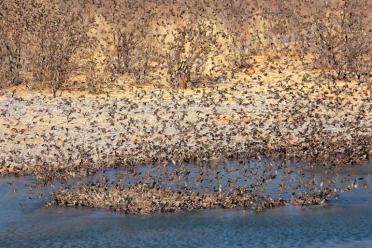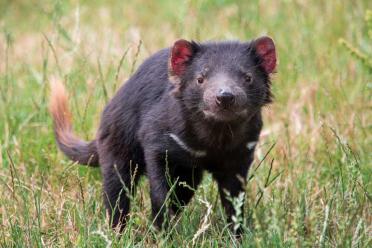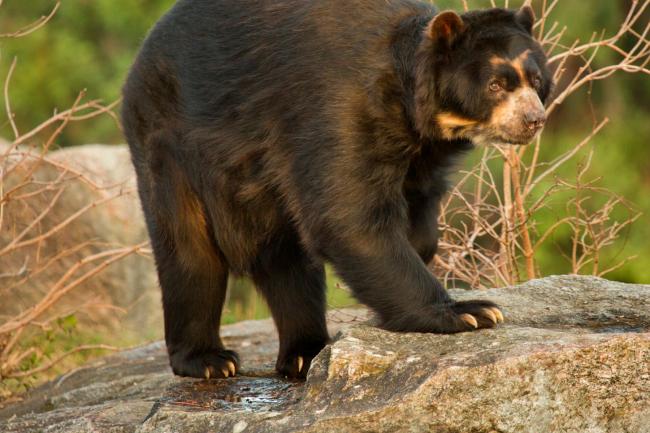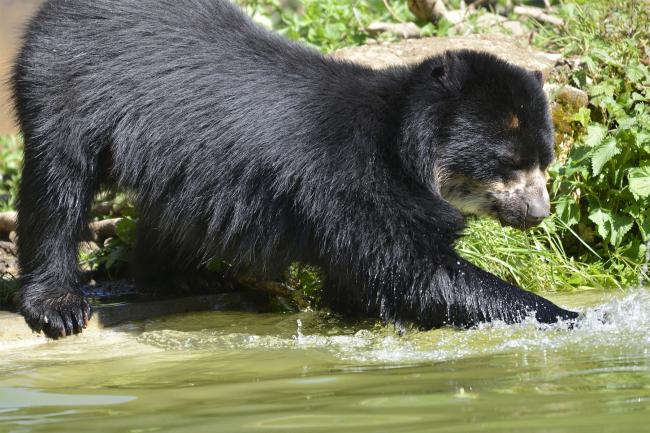
Conservation genomics gives endangered species a helping hand in recovering their numbers back to a sustainable size. Dr Graham Etherington, Senior Computational Biologist in the Vertebrate & Health Genomics Group explains how we use the latest technologies to bring endangered species back from the brink.

Large populations are generally diverse in their genetic makeup. This means that if you randomly selected a gene from a number of different individuals of the same species, you would find very subtle differences in their DNA sequence.
This variation is what we term ‘genetic diversity’ and every difference between individuals is known as an ‘allele’.
If a population has a high level of genetic diversity, certain individuals are more likely to be able to respond to changes in the environment. This particular variation (which might be neutral to start off with, i.e. it has no advantage or disadvantage), might become advantageous, providing those individuals with particular alleles to adapt to different environments than those without them and hence, promoting increased survival, and inevitably, breeding.
This variation is then passed down to their offspring, furthering the success of the species.
Small populations, however, can suffer from reduced genetic diversity through inbreeding. For example, a comparison of various positions along the genome of 25 Red-billed Queleas (Quelea quelea), the world’s most numerous bird, might find three to four different alleles, whereas the same positions in the genomes of all 25 remaining Madagascar Pochards (Aythya innotata), the world’s rarest bird, would likely only find one or two alleles. This pattern of ‘low allelic diversity’ can be quantified along the genome by sequencing of multiple individuals from the population.

The Black-footed Ferret once numbered only seven individuals.

Genetics lucky-dip.
In a not-so-uncommon scenario, imagine if the Red-billed Quelea population, possessing high levels of genetic diversity, suddenly crashed to only 100 individuals – this high level of genetic diversity would be lost – along with the ability to respond to changes in the environment.
In conservation genomics, we study this genetic diversity in all genes to better understand their implications to ecology, health, and disease. This random loss of genetic diversity in diminishing populations is a process known as ‘genetic drift’ and is further complicated by ‘inbreeding depression’, where related individuals breed with each other which results in further loss of genetic diversity.

Not all genes are equal.
One of the first problems that small populations of endangered species face is that of disease.
For example, the Black-footed Ferret (Mustela nigripes), whose population size recently plummeted to as low as only seven individuals, is susceptible to diseases not known to affect other ferret or polecat species. This may well be due to inbreeding depression and genetic drift with a subsequent loss of advantageous alleles in genes responsible for fighting disease.
In conservation genomics, studying genes involved in immune response are one of the highest priorities, as these genes are usually some of the first to affect a small population suffering from a loss of genetic diversity.


In conservation genomics, studying genes involved in immune response are one of the highest priorities …

Genetic rescue.
So what can we do with the information obtained from a Conservation Genomics approach? ‘Genetic Rescue’ is an approach aimed at carefully reintroducing genetic diversity into endangered species. A classic example is that of the Florida Panther (Puma concolor).
The Florida Panther had been reduced to a population size of no more than 25 individuals, with significant signs of inbreeding and resulting loss of genetic diversity.
The introduction of eight panthers from Texas to the natural Florida panther habitat allowed for an increase of genetic diversity in the population, permitting the species to overcome the effects of inbreeding and tripling the population size.

A population problem.
Conservation genomics can also be used to identify the best population to use for genetic rescue. By sequencing and analysing the genomes of a potential ‘genetic donor’ population, we can identify regions of the genome that are linked to adaptation.
We can then choose which individuals to introduce by comparing the donor genomes to that of the target populations. To identify the best donor individuals, we can pick the genomes with the highest diversity, or by pinpointing the positions in the target genomes responsible for inbreeding depression and then introduce individuals that have a range of different alleles at those positions.
Other efforts could look towards utilising recent advances and breakthroughs in genome editing techniques, such as the first monkeys born with customised mutations.
These technologies could conceivably be used in conservation genomics through a carefully guided approach involving:
- Sequencing museum specimens from a period of time when a currently endangered species was not so rare and had high levels of genetic diversity
- Identifying genetic diversity ‘lost’ in the current population
- Using genome editing techniques to carefully reintroduce this lost genetic diversity back into the current, endangered population.

New technology brings new ideas and the moral dilemmas that often go along with them.

Conservation genomics tools.
It is still relatively expensive to sequence genomes, especially if you want really high-quality data, and researchers cannot always afford to do this. In this respect, the field of conservation genomics looks for alternatives to direct genome sequencing by creating cost-effective tools and resources for other researchers to use.
We can create SNP genotyping chips that can test for the presence or absence of certain genetic diversity within hundreds or thousands of individuals. Conservation genomics can also pinpoint a much-reduced subset of genes to sequence, in order to identify the genetic diversity within a large number of individuals, negating the need of sequencing the whole genome.

Let's not forget...
Technology moves fast and today’s dream is often tomorrow’s reality. New technology brings new ideas and the moral dilemmas that often go along with them. Of course, however advanced technology becomes, we still must remember that habitat conservation and management should always remain one of our most important priorities.









